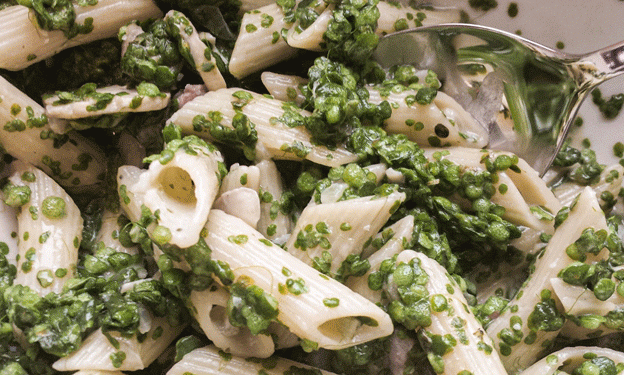In the face of growing concerns about food security, environmental sustainability, and the need for plant-based proteins, the European Union has taken a major step: it has approved water lentils, also known as duckweed, as a new vegetable for human consumption. This decision is the result of years of research and regulatory effort, spearheaded by scientists at Wageningen University & Research (WUR), and supported by institutions like the Wellcome Trust and the Goeie Grutten Foundation.
Water lentils are among the smallest flowering plants on Earth, floating on the surface of still water bodies. In Asia — especially Thailand — species like Wolffia globosa have long been part of traditional cuisine. But now, with the European Food Safety Authority (EFSA) giving the green light, the Western food sector has the opportunity to introduce this ancient plant to modern plates.
Why Water Lentils Matter
Water lentils are rich in protein, containing up to 40% protein by dry weight, and possess a well-balanced profile of essential amino acids. They are also high in vitamins (A, B12), minerals (iron, zinc, manganese), and antioxidants, making them a nutritionally dense leafy vegetable.
From an environmental perspective, water lentils are outstanding:
- They grow on water, not soil, and thrive with minimal nutrient input.
- No pesticides are needed in closed systems like greenhouses or vertical farms.
- No arable land is used, making them ideal for urban agriculture.
- According to WUR, water lentils can yield over six times more protein per hectare than soybeans, one of the most widely cultivated protein crops.
Their exponential growth pattern means they can double every 48–72 hours, allowing for weekly harvests with relatively low resource input.
Overcoming Regulatory and Consumer Hurdles
Historically, introducing water lentils into the European food chain was difficult. EFSA considered them a “novel food,” requiring rigorous safety data. Wageningen researchers had to demonstrate consistent nutrient levels across multiple batches and prove the crop could be safely consumed — particularly with respect to manganese content, which needed to match levels found in spinach.
After the approval of Wolffia globosa in 2021 as a traditional food, further efforts led to the recognition of Lemna species as safe for widespread use. This development has cleared the regulatory path for commercial production — but challenges remain in scaling up.
Cultivation and Commercial Potential
Currently, no EU countries are cultivating water lentils commercially, but interest is growing. In Israel, water lentils are sold as “green caviar,” and in the United States, startups are developing protein extraction technologies from water lentils for use in plant-based foods.
In the EU, the WUR project since 2022 aims to create a complete supply chain — from greenhouse production to product development — and encourage food companies to explore various applications. Water lentils could be marketed:
- Fresh or frozen, like spinach
- In ready-to-eat meals
- As a protein additive for pasta, cheese, or smoothies
- As a meat alternative or ingredient in baked goods
Consumer studies conducted by WUR with over 1,000 participants found growing acceptance. Participants enjoyed dishes like soups, stews, risottos, and even quiche containing water lentils. Notably, water lentil soup outperformed spinach soup in taste tests, proving the potential for consumer acceptance.
A Crop for a Changing World
The rise of water lentils aligns with broader agricultural and food trends:
- The global plant-based protein market is expected to grow from $17.4 billion in 2022 to $40.6 billion by 2027 (MarketsandMarkets).
- There’s a growing push toward resource-efficient, climate-resilient crops that don’t require deforestation, heavy fertilization, or irrigation.
- The EU’s Farm to Fork Strategy calls for more sustainable, local, and diversified diets — water lentils fit perfectly into that vision.
Water lentils are no longer just duckweed in stagnant ponds — they are now a legitimate and sustainable crop for the future. With the EU’s approval, the path is open for water lentils to join mainstream agriculture, offering a high-yield, low-input, and highly nutritious solution to global food challenges. For this tiny green plant to make a big impact, the next step must come from food companies, farmers, and innovators willing to bring it from the lab to the table.
Error





